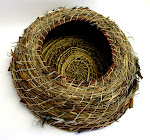
This weekend I am crawling out of my cocoon in quiet Mae Rim, outside Chiang Mai and heading off to Bangkok to check out some exhibitions with a group of 12 students that I teach.
Bangkok is the 22nd most populous city in the world. I remember the first time I visited Bangkok in 1992, it was just after the Black May coup d'etat and between the heavy military presence outside my hotel near the Democracy Monument, the humidity of June and the dense traffic, I wondered how people managed to survive and stay sane. My short trip to Asia, turned into an extended working holiday in Bangkok and some 3 years later I finally left Bangkok - I had survived but was decidedly less sane. I moved back to Bangkok in 2000 for 2 years and now love to visit, but think my days of gridlock traffic jams are over!
Anyway, I am looking forward to a weekend with lots of art, great food, some new inspiration and a bit of shopping. I am not sure whether the thought of going away with a group of 17 year old art students for a weekend makes me feel younger than I am or a lot older. In any case, its bound to be an interesting weekend.








